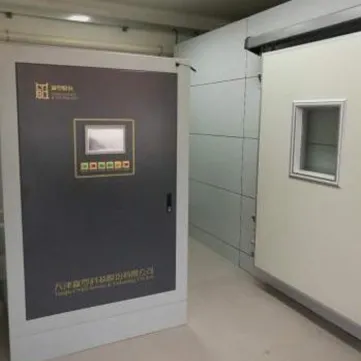Proper storage practices are essential for preserving and protecting valuable artifacts and collections in museums. Implementing the best practices for museum storage ensures the long-term preservation of objects, prevents damage, and facilitates efficient access and retrieval when needed. Here are some key best practices for museum storage:
Temperature and Humidity: Maintain stable temperature and humidity levels within the storage area to prevent deterioration and damage to the objects. The recommended temperature range is typically between 18-22°C (64-72°F), with a relative humidity of 40-55%. Avoid rapid fluctuations in temperature and humidity as they can cause stress on the objects.
Monitoring: Regularly monitor and record temperature and humidity levels using data loggers or monitoring systems. This information helps identify any fluctuations or issues that require attention.
Light Levels: Limit exposure of objects to light, particularly ultraviolet (UV) radiation, as it can cause fading and deterioration. Maintain low light levels in storage areas and use UV filters on windows and light fixtures.
Light Monitoring: Monitor light levels periodically to ensure compliance with recommended limits. Use light meters or sensors to measure the intensity of light in storage areas.
Preventive Measures: Implement preventive measures to minimize the risk of pest infestation. This includes regular cleaning, sealing gaps and cracks, and maintaining a clean and organized storage environment.
Monitoring: Conduct regular pest monitoring using traps or other detection methods to identify and address any signs of pests. Develop an integrated pest management plan to effectively manage and control pests.
Treatment: If pests are detected, employ appropriate pest control methods that are safe for the objects and follow best practices for treatment. Consult with professionals experienced in museum pest management.
Object Handling: Establish protocols and train staff on proper object handling techniques to minimize the risk of damage. Use gloves and other appropriate protective equipment when handling objects.
Packing Materials: Use archival-quality, acid-free materials for packing and storing objects. These materials should be chemically stable and free from contaminants that could cause degradation.
Support and Cushioning: Provide adequate support and cushioning to objects to prevent movement, vibration, and impact during storage. Use appropriate padding materials and supports to ensure objects are stored securely.
Shelving Design: Use sturdy, stable, and adjustable shelving units that can accommodate various object sizes and weights. Avoid overcrowding shelves to allow for proper air circulation and ease of access.
Shelving Materials: Choose shelving materials that are chemically stable, non-reactive, and free from contaminants that could harm objects. Materials like powder-coated steel or chemically inert plastics are commonly used in museum storage.
Storage Containers: Select appropriate storage containers that are acid-free, stable, and provide protection against dust, light, and pests. Containers should be properly labeled and organized for easy retrieval and inventory management.
Cataloging: Maintain a comprehensive inventory system that includes detailed records of each object, including its condition, location, and relevant information. Use standardized cataloging practices to ensure consistency and ease of retrieval.
Digital Documentation: Consider digitizing documentation and creating digital records of objects, including photographs and descriptions. This allows for efficient cataloging, tracking, and sharing of information.
Condition Reports: Regularly assess and document the condition of objects through condition reports. This helps track changes over time and identify any conservation or maintenance needs.
 Atmospheric-Pressure Low Oxygen Controlled Atmosphere Insecticidal Warehouse/ Cabinet
Atmospheric-Pressure Low Oxygen Controlled Atmosphere Insecticidal Warehouse/ Cabinet
 Low-oxygen(constant Humidity) And Clean Storage Cabinet
Low-oxygen(constant Humidity) And Clean Storage Cabinet
 Museum Drawer Cabinets
Museum Drawer Cabinets
 Low Oxygen Constant Humidity and Clean Warehouse
Low Oxygen Constant Humidity and Clean Warehouse
 Museum Collection Storage Warehouse
Museum Collection Storage Warehouse
 Museum Wall Display Case
Museum Wall Display Case
 Museum Table Display Cases
Museum Table Display Cases
 Museum Exhibit Display Cases
Museum Exhibit Display Cases